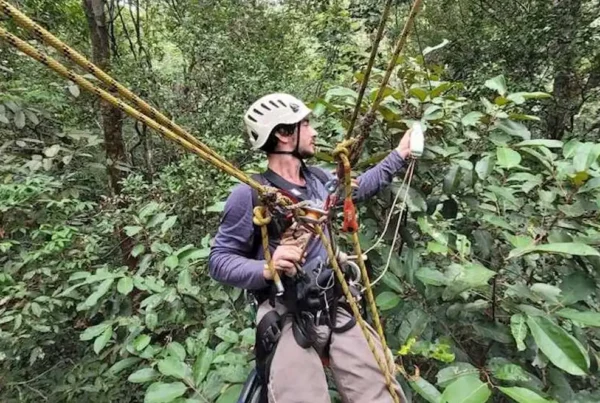As the planet warms, plants are working to slow the effect of human-caused climate change – and research published in Trends in Plant Science has assessed how plants are responding to increasing carbon dioxide (CO2).
“We know that terrestrial plants are currently absorbing more CO2 than is released into the atmosphere through the combination of fire, decomposition, plant respiration, and land-use change,” lead researcher Lucas Cernusak said.
“This is commonly known as the land carbon sink, and we know it’s currently slowing the rate at which atmospheric CO2 is increasing. What we don’t know is how strong that response is, and how long we can count on it. This research is a first step towards answering those questions.”
Associate Professor Cernusak, a terrestrial ecologist at James Cook University in Cairns, Australia, worked with colleagues from CSIRO Oceans and Atmosphere in Canberra and the French National Institute for Agricultural Research (INRA) to measure the strength of the terrestrial biosphere’s response to increasing CO2.
They focussed on photosynthesis – the process in which plants capture energy from the sun and use it to synthesize carbohydrates from CO2 and water – and examined terrestrial gross primary productivity (GPP), a measure of global photosynthesis.
Their modelling and analysis revealed that, since the beginning of the industrial era, photosynthesis has increased in nearly constant proportion to the rise in atmospheric CO2.
“We expected the two would corelate, since CO2 stimulates photosynthesis, but given the complexity of plant and environmental interactions we were impressed by how closely they have kept pace,” Associate Professor Cernusak said.
“We can say that plants are working hard –the response is at the highest end of the expected range.”
The researchers used a combination of existing analyses and new modelling, alongside laboratory studies, to examine how increased CO2 affects photosynthesis, from individual leaves up to a global scale.
“This is an important step forward in the long and complex task of gauging how terrestrial vegetation will respond to climate change in the longer term,” Associate Professor Cernusak said.
While increased CO2 has allowed an increase in photosynthesis and global leaf area, the researchers warn that further climate change – with increasing frequency of events such as heat waves, droughts and storms – has the potential to significantly stress terrestrial vegetation and decrease production.
“It’s also important to remember that global change will manifest differently in different regions,” Associate Professor Cernusak said.
“Our observations and modelling analyses suggest that in high latitude ecosystems it’s global warming that is driving the increase in leaf area and growing-season length.
“That’s quite different from the tropics, where our study indicates that CO2 fertilisation is driving the growth in photosynthesis, while climbing temperatures can create significant stress for some plant species.”
The researchers’ focus is now on the future.
“Looking back over time has answered one of the questions we started out with. We’re seeing a robust response from terrestrial ecosystems, or the land carbon sink, to increasing CO2.” Dr Cernusak said.
“The next step is to use what we’ve learnt, to develop ways to better predict how terrestrial ecosystems will interact with future changes in the global carbon cycle. That would help us answer that second question: how long can we count on plants to slow the rate at which atmospheric CO2 is increasing?”
Read the paper: Trends in Plant Science
Article source: James Cook University
Image: James Cook University








